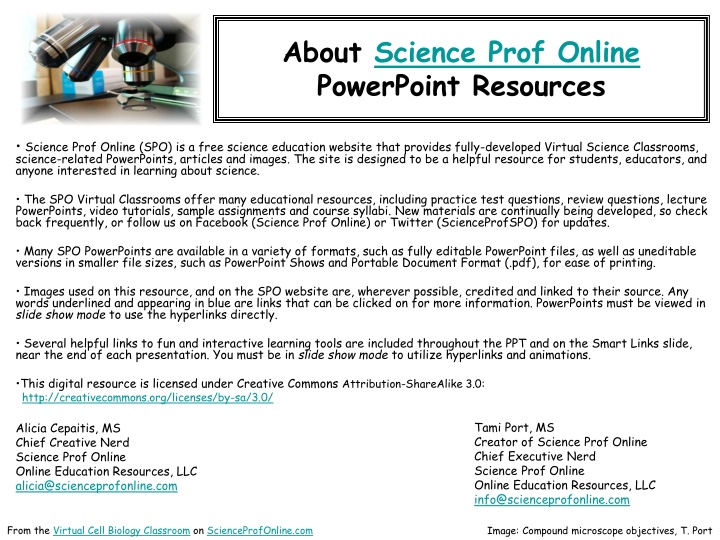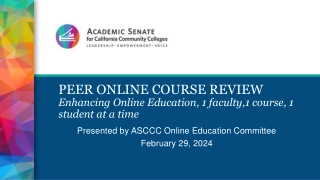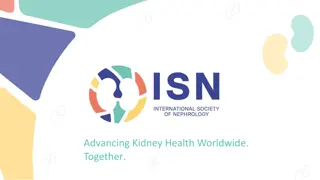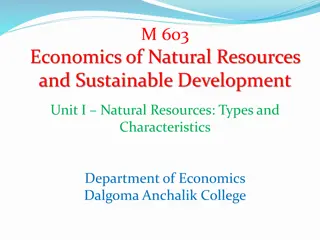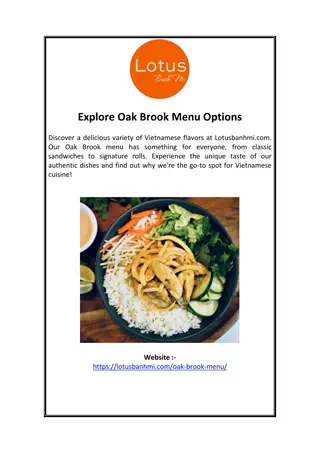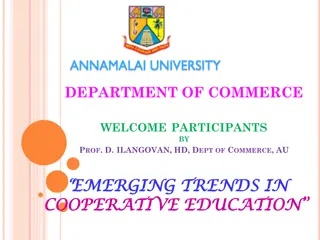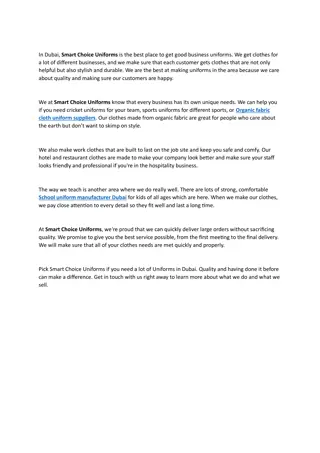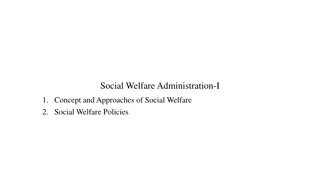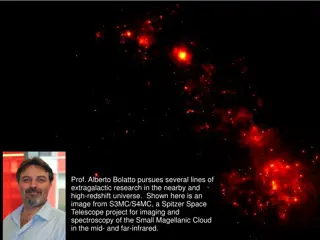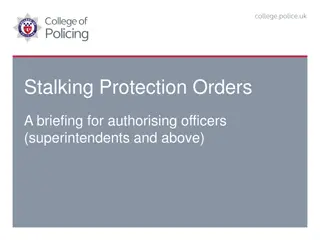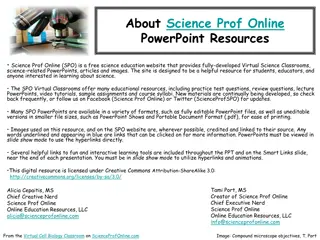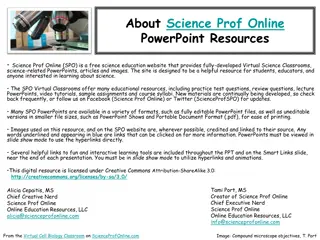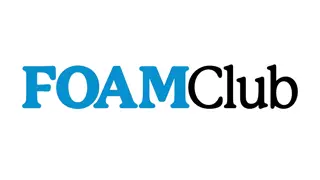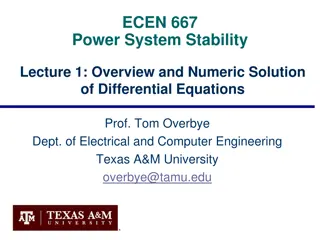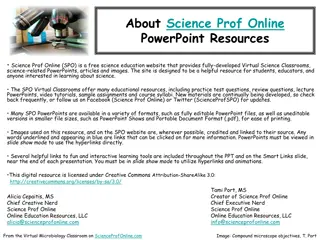Free Science Education Resources on Science Prof Online (SPO)
Science Prof Online (SPO) is a valuable free science education website offering fully-developed Virtual Science Classrooms, science-related PowerPoints, articles, and images. It serves as a comprehensive resource for students, educators, and anyone interested in science. Explore practice test questions, review materials, lecture PowerPoints, video tutorials, and more. Stay updated on new content by following SPO on social media. The site also provides various formats of PowerPoints for ease of use. Get insights into topics like chemical solutes, solvents, solutions, and solubility. Discover the factors that determine solubility and the Like Dissolves Like Rule.
Download Presentation

Please find below an Image/Link to download the presentation.
The content on the website is provided AS IS for your information and personal use only. It may not be sold, licensed, or shared on other websites without obtaining consent from the author.If you encounter any issues during the download, it is possible that the publisher has removed the file from their server.
You are allowed to download the files provided on this website for personal or commercial use, subject to the condition that they are used lawfully. All files are the property of their respective owners.
The content on the website is provided AS IS for your information and personal use only. It may not be sold, licensed, or shared on other websites without obtaining consent from the author.
E N D
Presentation Transcript
About Science Prof Online PowerPoint Resources Science Prof Online (SPO) is a free science education website that provides fully-developed Virtual Science Classrooms, science-related PowerPoints, articles and images. The site is designed to be a helpful resource for students, educators, and anyone interested in learning about science. The SPO Virtual Classrooms offer many educational resources, including practice test questions, review questions, lecture PowerPoints, video tutorials, sample assignments and course syllabi. New materials are continually being developed, so check back frequently, or follow us on Facebook (Science Prof Online) or Twitter (ScienceProfSPO) for updates. Many SPO PowerPoints are available in a variety of formats, such as fully editable PowerPoint files, as well as uneditable versions in smaller file sizes, such as PowerPoint Shows and Portable Document Format (.pdf), for ease of printing. Images used on this resource, and on the SPO website are, wherever possible, credited and linked to their source. Any words underlined and appearing in blue are links that can be clicked on for more information. PowerPoints must be viewed in slide show mode to use the hyperlinks directly. Several helpful links to fun and interactive learning tools are included throughout the PPT and on the Smart Links slide, near the end of each presentation. You must be in slide show mode to utilize hyperlinks and animations. This digital resource is licensed under Creative Commons Attribution-ShareAlike 3.0: http://creativecommons.org/licenses/by-sa/3.0/ Tami Port, MS Creator of Science Prof Online Chief Executive Nerd Science Prof Online Online Education Resources, LLC info@scienceprofonline.com Alicia Cepaitis, MS Chief Creative Nerd Science Prof Online Online Education Resources, LLC alicia@scienceprofonline.com From the Virtual Cell Biology Classroom on ScienceProfOnline.com Image: Compound microscope objectives, T. Port
Chemical Solutes, Solvents & Solubility For additional resources on this lecture topic, see the Inorganic Chemistry Main Page on SPO.
Solutions Solutions are homogeneous mixtures in which one substance is dissolved in another. Solutions have two parts: solute & solvent Q:Which is the substance that is dissolved? So the substance that does the dissolvingis called the ? Homogeneous means that thethe solute and the solvent are evenly distributed. A heterogeneous mixture is made of different substances that remain physically separate. Image: Hummingbird at feeder, Wiki From the Virtual Cell Biology Classroom on ScienceProfOnline.com
Solubility (mixability) A measure of how much of a given substance will dissolve in a liquid. Relates to whether the molecules involved are polar or non-polar. A substance that does not dissolve is insoluble. Example:Oil is insoluble in water. A substance that does dissolve is called soluble. Example: Sugar is soluble in water. From the Virtual Cell Biology Classroom on ScienceProfOnline.com
What determines solubility? Like Dissolves Like Rule Substances with charges (full or partial) like to mix with one another. From the Virtual Cell Biology Classroom on ScienceProfOnline.com
Water is considered the Universal Solvent Water dissolves more substances than any other liquid. The water molecule s polarity makes it such an excellent solvent. The polarity allows water to become attracted to many other charged (ions) or partially charged (polar) molecules. Images: A water drop , Wiki; Solvation of Na+ in water, Wiki From the Virtual Cell Biology Classroom on ScienceProfOnline.com
Polar vs. Non-Polar Covalent Bonds Non-polar molecules have electrons equally shared between their atoms. Polar molecules unequally share electrons between atoms, so have a slight positive charge at one end and a slight negative charge at the other. Video: Polar & Non-Polar Molecules from Crash Course Biology Image: Polar water molecule, Non-polar methane molecule, Wiki From the Virtual Cell Biology Classroom on ScienceProfOnline.com
Water is a good solvent for many other polar solutes. Polar Covalent Molecules include: Ammonia NH3 Glucose C6H12O6 Urea (NH2)2CO *High ratio of O s and N s tend to make a molecule polar. For example, blood is a water based solution. Image: Polar water molecule, Wiki From the Virtual Cell Biology Classroom on ScienceProfOnline.com
Water is also a good solvent for ionic compounds. (a.k.a. salts & electrolytes) The partial and full charges attract each other. Salts dissociate into their ions in water. Video of dissociation of NaCl into water. Video clip from movie Idiocracy: Brawndo Has What Plants Crave! From the Virtual Cell Biology Classroom on ScienceProfOnline.com
Charged molecules are Hydrophilic - from the Greek (hydros) "water" and (philia) "friendship - Water loving - Water soluble - Example: Water & sugar Image: Hummingbird at feeder, Water molecule, Sucrose molecule, Wiki From the Virtual Cell Biology Classroom on ScienceProfOnline.com
Non-polar substances DO NOT carry any kind of charge Mainly molecules made of C s and H s. Example: Oily or gasoline based substances From the Virtual Cell Biology Classroom on ScienceProfOnline.com
What determines solubility? Like Dissolves Like Rule Non-polar solvents dissolve non-polar solutes. Image: Mineral turpentine, Wiki From the Virtual Cell Biology Classroom on ScienceProfOnline.com
Non-polar, uncharged molecules are Hydrophobic from the Greek (hydros) water and (phobia) fearing or hating Water-fearing Not water soluble Example: Cholesterol is not water soluble Non-polar solvents dissolve non- polar solutes. Examples: Turpentine dissolves oil-based paints. Cholesterol is important component of greasy cell membranes. Image: Water droplets on hydrophobic surface of plant, Wiki From the Virtual Cell Biology Classroom on ScienceProfOnline.com
Oil and Water Dont Mix Hydrophobic & Hydrophilic substances DO NOT MIX Examples: Salad dressing, grease fire and water Insoluble:Substances that do NOT mix in each other. Solute does not dissolve. Line of separation. From the Virtual Cell Biology Classroom on ScienceProfOnline.com
Solubility MOLECULE Hydro - Solvent examples What elements to look for Polar, charged philic (likes) water, alcohols Hydrogen bound to elements that are electronegative in relation such as oxygens & nitrogens) Non-polar, not charged phobic (doesn t like) Carbon-hydrogen bonds oil-based From the Virtual Cell Biology Classroom on ScienceProfOnline.com
Confused? Here are some links to fun resources that further explain Inorganic and Covalent Compounds & Solutions: Smart Links Video of dissociation of NaCl into water. Factors Affecting Solubility, animation from Tutor Vista. Video clip from movie Idiocracy: Brawndo Has What Plants Crave! Polar & Non-polar Molecules from Crash Course Chemistry #23. From the Virtual Cell Biology Classroom on ScienceProfOnline.com
Are you feeling blinded by science? Do yourself a favor. Use the Virtual Cell Biology Classroom (VCBC)! The VCBC is full of resources to help you succeed, including: practice test questions review questions study guides and learning objectives PowerPoints on other topics You can access the VCBC by going to the Science Prof Online website www.ScienceProfOnline.com Images: Blinded With Science album, Thomas Dolby; Endomembrane system, Mariana Ruiz, Wiki
